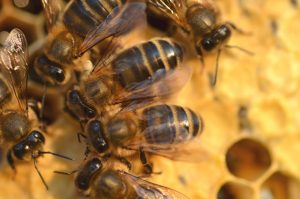New farmer-friendly strategy could reverse collapse in bee population

Devoting a quarter of cropland to flowering economic crops could attract pollinators and boost crop yields, new research has found.
Stefanie Christmann of the International Center for Agricultural Research in Dry Areas concluded that a new farmer-friendly strategy could be key in the fight against bee decline.
More than 80% of food crops require pollination but the populations of insects that do most of this work have collapsed, The Guardian reported.
Lots of countries have been taking measures to counteract the decline, with many European nations deciding to ban insecticides such as neonicotinoids.
However, this kind of measures are usually expensive and offer little income to farmers, Christmann said, which is why she has spent the past five years working on a different approach, which she calls “farming with alternative pollinators”, with field trials in Uzbekistan and Morocco.
According to The Guardian, the essence of the technique is to devote one in every four cultivation strips to flowering crops, such as oilseeds and spices.
Additionally, Christmann provided pollinators with cheap nesting support, such as old wood and beaten soil that ground-nesting bees can burrow into. Sunflowers were also planted nearby as wind shelters.
“There is a very low barrier so anyone in even the poorest country can do this. There is no equipment, no technology and only a small investment in seeds. It is very easy. You can demonstrate how to do it with pictures sent on a cell phone," she was quoted as saying.
She said that there were amazing benefits for farmers when using this technique and an increase in abundance and variety of pollinators.
Crops were reportedly pollinated more efficiently, there were fewer pests such as aphids and greenfly, and yields increased in quantity and quality.
In all four different climatic regions that she studied, the total income of farmers increased, though the benefits were most marked on degraded land and farms without honeybees.
The biggest gains were in semi-arid climates, where pumpkin yields rose 561%, aubergine 364%, broad bean 177% and melons 56%. In areas with adequate rain, tomato harvests doubled and aubergine went up 250%. In mountain fields, courgette production tripled and pumpkins doubled.
“The entire environment would be richer, more beautiful and more resilient to climate change. We would have many more insects, flowers, and birds. And it would be far more self-sustaining. Even the poorest countries in the world could do this,” she was quoted as saying.









































